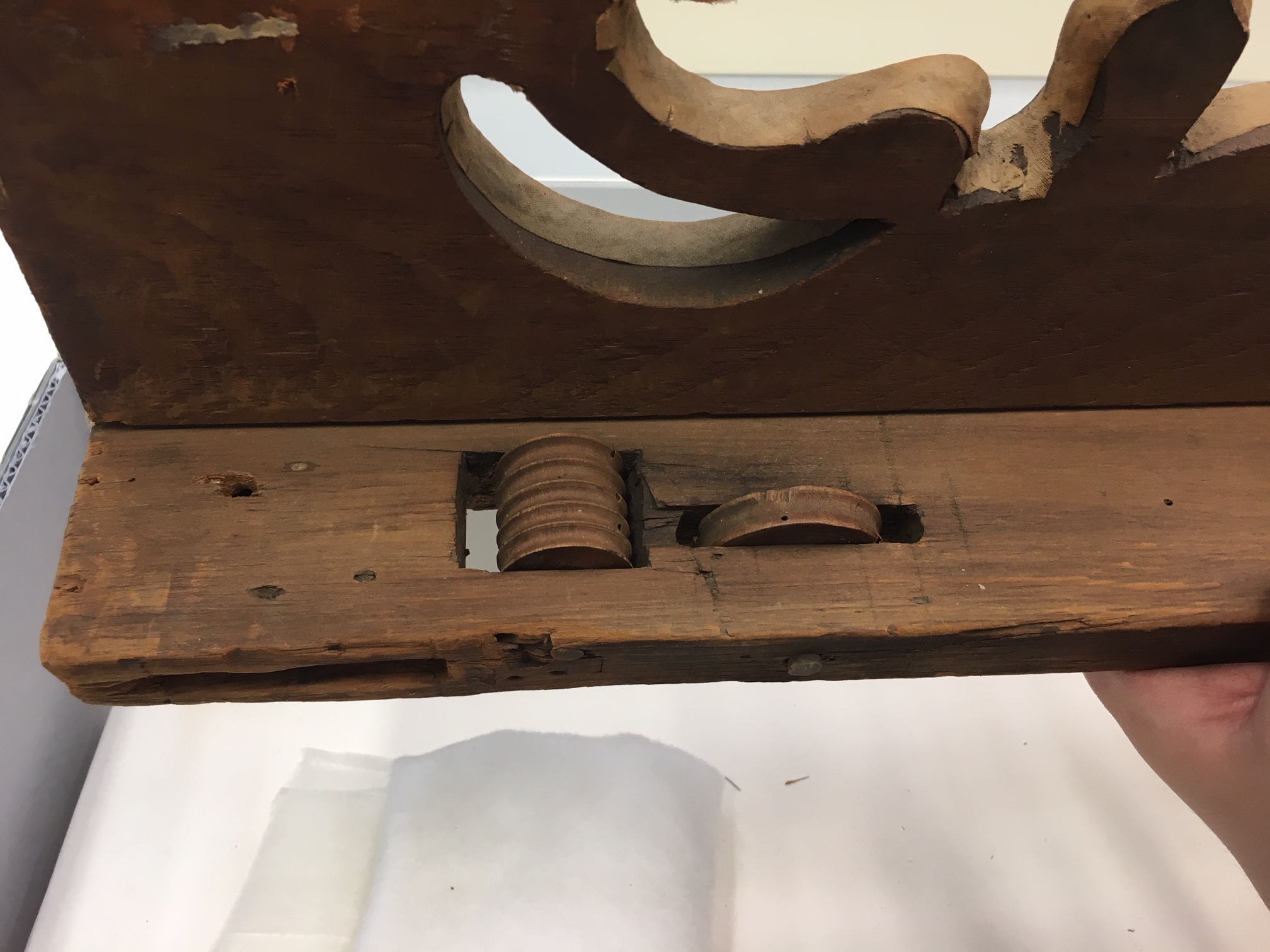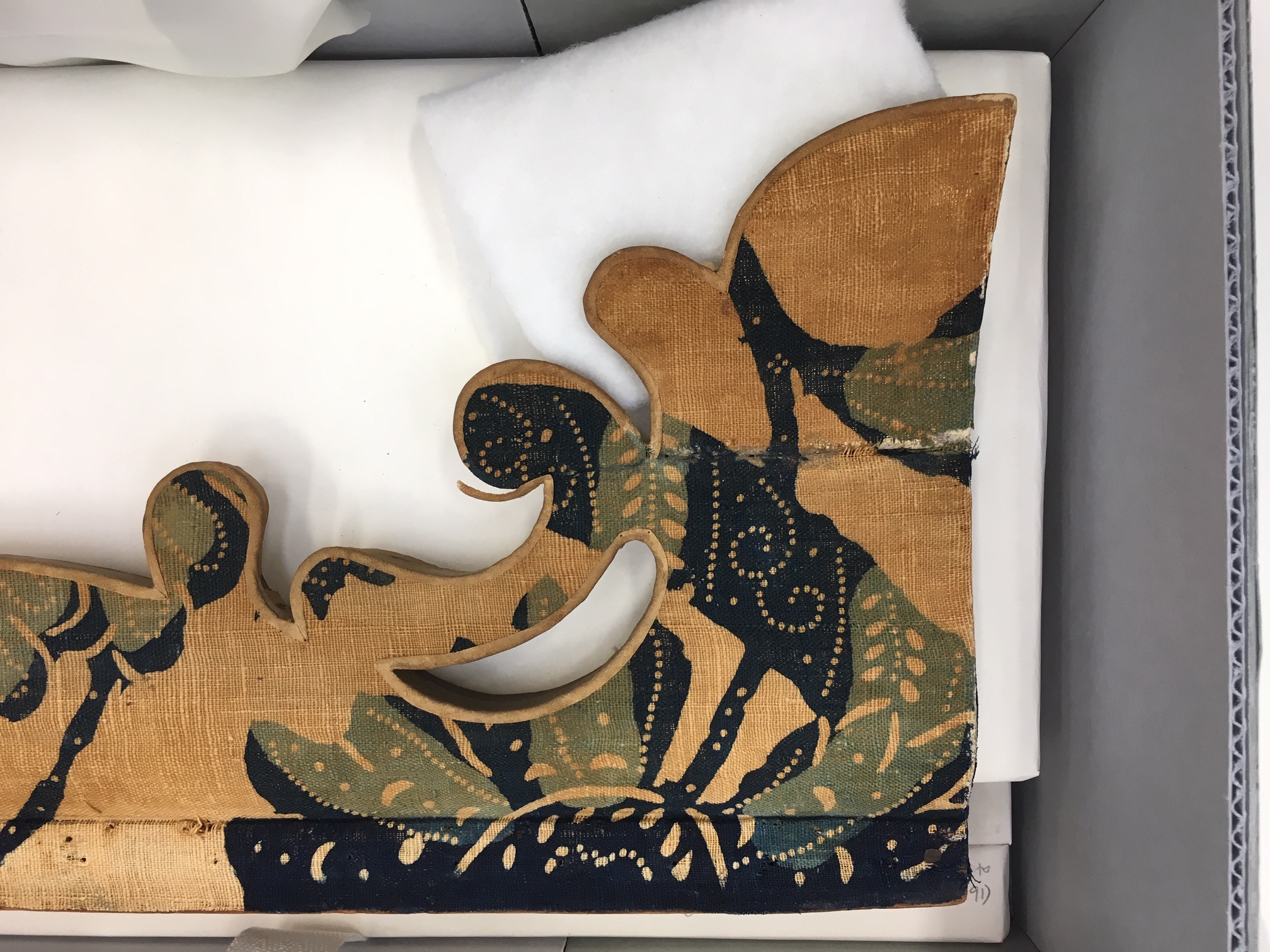Bedstead
A New England origin can be assumed for this bedstead based on the birch and white pine of which it is made. Other evidence suggests a source in central Connecticut: it has a history of ownership in Wethersfield and its foot-posts are diminutive versions of furniture made by Eliphalet Chapin in East Windsor. The bedstead supported a unique set of original eighteenth-century fabric-covered cornices—the sole surviving American ones known, which were carved in wood with pierced decorative patterns before the fabric was expertly glued to the wood. The fabric on the cornices is what is known as "blue resist", a type of cotton that was indigo-dyed in several steps to create the large floral pattern. It was most likely produced in India, and then imported to England, and from England to the American colonies. It was especially popular in the Hudson River Valley, Long Island, and Connecticut.
The small pulley wheels embedded into the three bed cornices (one narrow foot cornice and two longer side cornices) reveal how the bed curtains on the bed would have been hung. The fabric for the curtains was nailed directly onto the cornices, in the flat area beneath the carved section. Small rings would have been attached to the back of the curtains in a curve from bottom to top. A narrow rope or twine would have been threaded through the rings, and then through the pulley mechanism. By pulling the ropes, the curtains could be pulled up into decorative "festoons" during the day. At night, when there was more need for warmth and privacy, the curtains would be lowered. The set also includes a plain piece of wood for the head of the bed—there are many nail holes in it, attesting to the fact that it supported the head cloth for the bed, which was probably taken down to be washed on occasion, and then nailed back up. All four pieces were fitted together to make the top part of the bed by mortice and tenon joints.
Due to rights restrictions, this image cannot be enlarged, viewed at full screen, or downloaded.
This artwork is meant to be viewed from right to left. Scroll left to view more.






